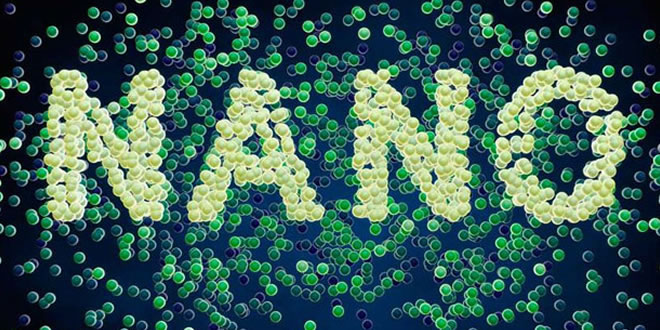Potential Benefits of Nanotechnology to Developing Countries
The 2008 Olympic Games was marked with many remarkable events. One of the most widely discussed topics was undoubtedly Michael Phelps new swimsuit. Introduced by Speedo, it repelled water and increased buoyancy and the swimmer went on to set new records. This was just one example of how nanotechnology can revolutionize the world we live in today. An interdisciplinary science that manipulates the growth of materials from the atomic level, this field could potentially lead to such practical applications such as self-cleaning paint that never fades; planes with skins that de-ice themselves and adjust to different aerodynamic environments; and more efficient and cleaner burning fuels. Beckoning phenomenal possibilities, it is believed that nanotechnology will have a greater impact on the world than the Industrial Revolution. Predicted to be a multi-billion dollar business by 2015, nanotechnology is estimated to need a worldwide workforce of 2 million by this time. It is a promising field for minds looking for engineering jobs that will provide ground-breaking technology.
One of the most advantageous aspects of nano-engineering is that it is exceptionally cost-effective, the raw product is abundant, non-polluting, and requires little energy. This could be both relevant and appropriate to sustainable development practices in developing countries. However, in some cases its application may undermine alternative, more appropriate approaches to dealing with the problems at hand. Several developing countries have launched nanotechnology initiatives in order to strengthen their capacity and sustain economic growth. Countries like Brazil, India, China, South Korea, South Africa and Thailand have significant nanotechnology research initiatives and have established national activities that are being directed toward the particular needs of the poor.
Some of the following nanotechnology applications may benefit developing countries in the years to come:
1. Producing, storing and converting energy
One of the major challenges developing countries face is ensuring accessibility of adequate energy to a rapidly rising population. For those living in extreme poverty, a lack of access to energy services dramatically affects and undermines health, limits opportunities for education and development, and can reduce a family’s potential to rise up out of poverty. Solar cells that use nano-materials have been developed, not only increasing efficiency but also using much cheaper and more flexible carrier materials. This promises to provide a competitive alternative to people in remote regions with no access to an electricity grid.
2. Boosting agricultural productivity
Research in nanotechnology is being conducted to contribute to food security, a crisis faced in most developing nations. The development of nanotech materials for the slow release and efficient dosage of fertilizers for plants and of nutrients and medicines for livestock are underway. Other agricultural developments include nano-sensors to monitor the health of crops and farm animals and magnetic nano-particles to remove soil contaminants.
3. Treating and remediating water
According to World Health Organization about 2.6 billion people, half the developing world, lack even a simple latrine and 1.1 billion people have no access to any type of improved drinking source of water. As a result 1.6 million people, mostly in developing countries, die every year from diseases attributable to lack of access to safe drinking water and basic sanitation. Nanotechnology may contribute to several solutions. Some existing water treatment technologies remove contaminants effectively, are easy to handle and can be produced locally. Other water applications include systems that decompose organic pollutants and remove salts and heavy metals from liquids, enabling the use of heavily contaminated and salt water for irrigation and drinking.
4. Disease diagnosis and screening
Hopes are high that nanotechnology research will yield new diagnostic tests and treatments for many of these diseases. There are technologies that have created inexpensive, hand-held diagnostic kits to detect the presence of several pathogens at once and could be used for wide-range screening in small clinics. Meanwhile, nanotechnology applications are in development that would greatly enhance medical imaging. Many also believe that nanotechnology offers new ways to address residual scientific concerns for the diagnosis and treatment for tuberculosis.
5. Delivering drugs
Diseases such as tuberculosis, cancer and AIDS require long term use of medicine. Often these drugs have debilitating side effects on the patient and in some cases; the patients opt out of receiving the treatment as soon as they feel better. Developments in the use of nanotechnology in drug delivery using nanoparticles to deliver drugs to cancer cells are underway. Particles are engineered so that they are attracted to diseased cells, which allow direct treatment of those cells. This technique reduces damage to healthy cells in the body. Nanotechnology could also potentially reduce transportation costs and even required dosages by improving shelf-life, thermo-stability and resistance to changes in humidity of existing medications.
6. Processing and storing food
In developing countries, over 40% of food losses happen after harvest and during processing. Financial, managerial and technical constraints in harvesting techniques as well as storage –and cooling facilities lead to recurrent food and waste loss each year. Nanotechnology has the potential to improve food processes that use enzymes to confer nutrition and health benefits. Packaging materials with nano-materials that reduce oxygen leaks allow food to be stored longer. It may also enable a wider and more efficient distribution of food products to remote areas .
7. Maintaining air quality
According to UNEP, urban air pollution costs approximately 5% of the GDP in developing countries. Rapid urbanisation has resulted in increasing urban air pollution in major cities, especially in developing countries. While most developed countries have put in measures to reduce vehicle emissions, in terms of fuel quality and vehicle emission reduction technologies, these measures are yet to be adopted in most cities in developing countries. Nanotechnology can improve the performance and cost of catalysts used to transform vapours escaping from cars or industrial plants into harmless gases. There are also innovations that may destroy air pollutants with light as well as detect toxic materials and leaks.
8. Construction
Economies in developing countries have lagged behind for years largely due to poor infrastructure. Poor housing and living conditions amongst low income groups, particularly in informal settlements and slums, is characteristic. Nanotechnology can be used for design and construction processes in many areas since nanotechnology generated products have many unique characteristics. Some nano-molecular structures can make asphalt and concrete more resistant to water, materials block ultraviolet and infrared radiation, materials for cheaper and durable housing, surfaces, coatings, glues, concrete, and heat and light exclusion; and self-cleaning for windows, mirrors and toilets.
9. Monitoring health
What if you could implant a micro worm that monitors the chemical processes within your body? It would allow diabetics to check their blood sugar simply by looking at their skin. There are several nano-devices being developed to keep track of daily changes in patients’ physiological variables such as the levels of glucose, carbon dioxide, and cholesterol, without the need for drawing blood in a hospital setting. In developing countries tackling a deficit of skilled health workers, such developments would allow health workers to focus on more urgent issues as they arise.
10. Detecting and controlling vectors and pests
While insects are an integral part of the environmental balance, some of them can be very damaging when their populations grow rapidly, leading to the complete destruction of natural ecosystems. In developing countries severe outbreaks may compromise national economies, threaten local economic stability and food security. Furthermore, applications of chemical pesticides tend to have adverse effects on animals and human beings apart from the decline in soil fertility. Nanotechnology provides green and efficient alternatives for the management of insect pests in agriculture without harming nature. It can also be used for pest detection, and improved pesticides, insecticides, and insect repellents.



